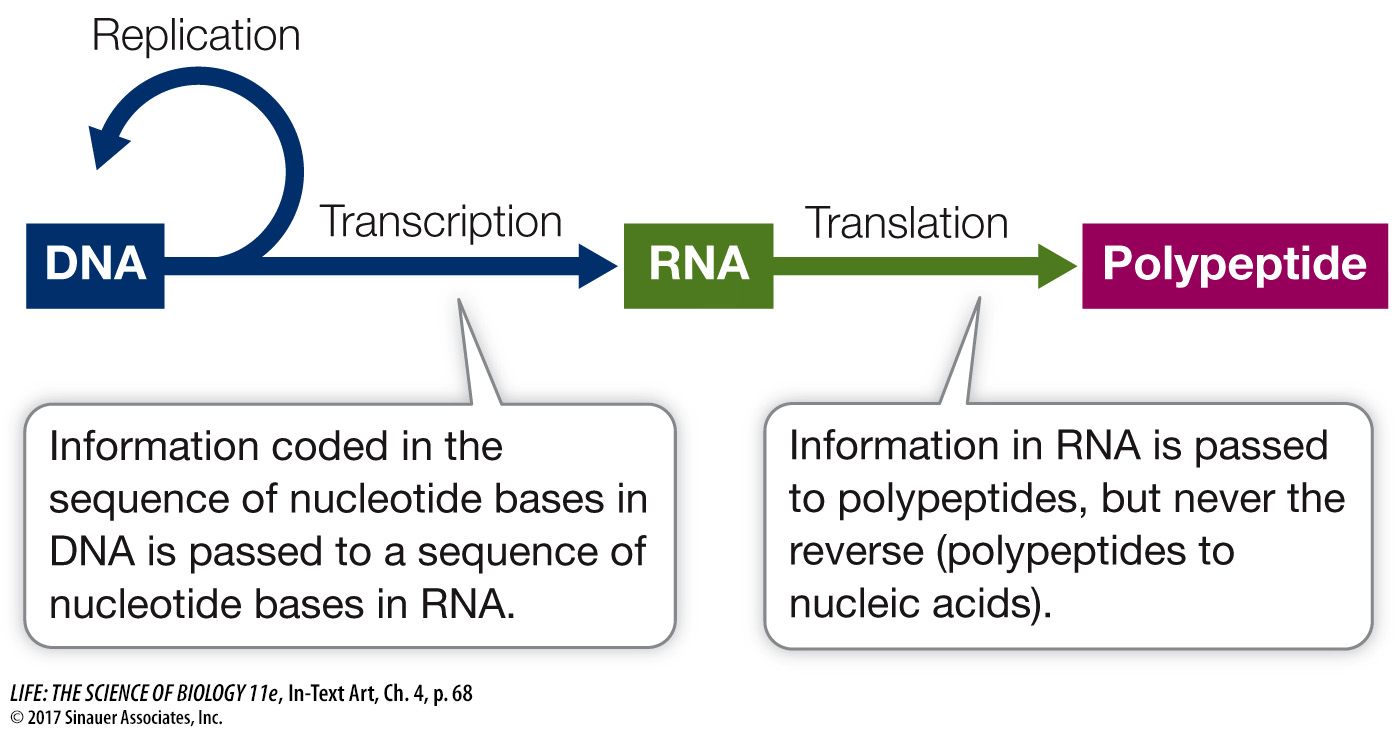DNA carries information and is expressed through RNA
DNA is an informational molecule. The information is encoded in the sequence of bases carried in its strands. For example, the information encoded in the sequence TCAGCA is different from the information in the sequence CCAGCA. DNA transmits information in two ways:
DNA can be reproduced exactly. This process, called DNA replication, is done by polymerization using an existing strand as a base-
pairing template. Certain DNA sequences can be copied into RNA, in a process called transcription. The nucleotide sequence in the RNA can then be used to specify a sequence of amino acids in a polypeptide chain, in the process called translation. The overall process of transcription and translation is called gene expression.

The details of these important processes will be described in later chapters, but it is important to realize two things at this point:
DNA replication and transcription depend on the base-
pairing properties of nucleic acids . Recall that the hydrogen-bonded base pairs are A- T and G- C in DNA and A- U and G- C in RNA. Consider, for example, this double- stranded DNA region: 5′-TCAGCA-
3′ 3′-AGTCGT-
5′ Transcription of the lower strand will result in a single strand of RNA with the sequence 5′-UCAGCA-
3′. Can you figure out the sequence that the top strand would produce? DNA replication usually involves the entire DNA molecule. Since DNA holds essential information, it must be replicated completely and accurately so that each new cell or new organism receives a complete set of DNA from its parent (Figure 4.5A). The complete set of DNA in a living organism is called its genome. However, not all of the information in the genome is needed at all times and in all tissues, and only small sections of the DNA are transcribed into RNA molecules. The sequences of DNA that are transcribed into RNA are called genes (Figure 4.5B).

Q: What do you think determines whether a particular cell transcribes a sequence of DNA into RNA?
There must be specific information in DNA sequences that signal their transcription. These specific sequences must bind to proteins that are involved in transcription.
In humans, the gene that encodes the major protein in hair (keratin) is expressed in skin cells that produce hair. The genetic information in the keratin-